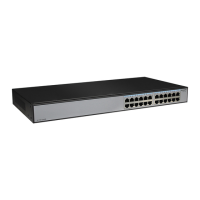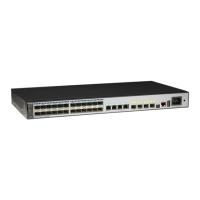Context
CAUTION
A Route reflector is valid only for IBGP peers. Before performing the configuration, you must
establish the IBGP peer relationships between MBGP route reflector and clients.
The configuration is optional. By default, the route reflector is not configured.
Do as follows on the switch that is to become an MBGP route reflector:
Procedure
Step 1 Run:
system-view
The system view is displayed.
Step 2 Run:
bgp as-number
The BGP view is displayed.
Step 3 Run:
ipv4-family multicast
The BGP-IPv4 multicast address family view is displayed.
Step 4 Run:
peer { group-name | ipv4-address } reflect-client
The local host is configured as a route reflector, and the peer (group) is specified as a client of
the route reflector.
The parameters of the command are explained as follows:
l group-name: specifies the name of an MBGP peer group.
l ipv4-address: specifies the IP address of a remote MBGP peer.
Step 5 (Optional) Run:
reflector cluster-id cluster-id
The cluster ID of the route reflector is configured.
By default, the route reflector uses its switch ID as the cluster ID.
cluster-id: Specifies the cluster ID of the route reflector. The value can be an integer ranging
from 1 to 4294967295. It can also be identified in the IPv4 address format.
----End
9.3.5 Configuring MBGP to Import Local Routes
MBGP can import routes from other protocols. When a dynamic routing protocol is imported,
the process ID need be specified.
S6700 Series Ethernet Switches
Configuration Guide - IP Routing 9 MBGP Configuration
Issue 01 (2012-03-15) Huawei Proprietary and Confidential
Copyright © Huawei Technologies Co., Ltd.
558

